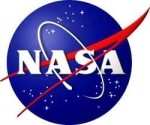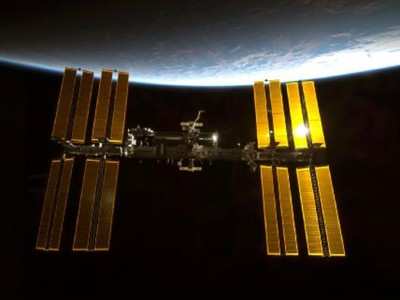Fri, Jul 16, 2010
NASA Picks Nine Experiments In Program's Inaugural Year
 NASA has selected nine experiments, designed by students at
seven schools, for astronauts to perform on the International Space
Station this summer. NASA selected the proposals from among 132
received for the new Kids in Micro-g! Program.
NASA has selected nine experiments, designed by students at
seven schools, for astronauts to perform on the International Space
Station this summer. NASA selected the proposals from among 132
received for the new Kids in Micro-g! Program.
This is the pilot year for the program, a student experiment
design challenge geared toward grades five through eight. Its
purpose is to give students a hands-on opportunity to design
experiments or simple demonstrations for testing both in the
classroom and in the station's microgravity environment. The
winners were chosen by a team of representatives from NASA's 10
field centers.
"What a wonderful experience for these kids to have their
experiments carried out in space and by astronauts," said Mark
Severance, International Space Station National Laboratory
Education projects manager at NASA's Johnson Space Center in
Houston. "This gives students the chance to see what happens
differently, other than in the classroom, when their experiment is
performed in an environment that is not on Earth."
The schools chosen to participate are:
- National Winner and NASA Glenn Research Center Regional Winner
Brownell Middle, Grosse Point Farms, MI.
- National Runner-up and NASA Kennedy Space Center Regional
Winner Vaughan Elementary, Powder Springs, GA.
- NASA Ames Research Center Regional Winner Hamlin School, San
Francisco, CA.
- NASA Goddard Space Flight Center Regional Winners (tie) East
Hartford-Glastonbury Magnet, East Hartford, CT and Carl Sandburg
Middle, Old Bridge, NJ.
- NASA Kennedy Space Center Regional Winner Windy Ridge
Elementary, Orlando, FL.
- NASA Langley Research Center Regional Winner Virginia Academy,
Ashburn, VA.

The experiments will study the effect of weightlessness on
various subjects such as humans and liquids and other materials, as
well as what the environment reveals about the laws of physics. The
experiments are expected to have observably different results in
microgravity than when performed in the classroom.
The apparatus for the experiments was constructed using the same
materials as a tool kit previously provided to astronauts on the
space station. The materials in the tool kit are commonly found in
the classroom and used for science demonstrations. The proposed
experiments or demonstrations are required to take no more than 30
minutes to set up, run and take down.
This fall, the program will ask for proposals for 2011.
More News
Circle To Runway (Runway Number) Used by ATC to inform the pilot that he/she must circle to land because the runway in use is other than the runway aligned with the instrument appr>[...]
Aero Linx: National Aviation Safety Foundation (NASF) The National Aviation Safety Foundation is a support group whose objective is to enhance aviation safety through educational p>[...]
At Altitude Of About 250-300 Ft Agl, The Airplane Experienced A Total Loss Of Engine Power On November 6, 2024, at 1600 central standard time, a De Havilland DHC-1, N420TD, was inv>[...]
From 2009 (YouTube Edition): Three Hour Flight Was 'Flawless' -- At Least, Until Mother Nature Intervened For anyone who loves the aviation business, this was a VERY good day. Afte>[...]
Also: AMA Names Tyler Dobbs, More Falcon 9 Ops, Firefly Launch Unsuccessful, Autonomous F-16s The Air Force has begun ground testing a future uncrewed jet design in a milestone tow>[...]
 ANN's Daily Aero-Term (05.05.25): Circle To Runway (Runway Number)
ANN's Daily Aero-Term (05.05.25): Circle To Runway (Runway Number) ANN's Daily Aero-Linx (05.05.25)
ANN's Daily Aero-Linx (05.05.25) NTSB Prelim: De Havilland DHC-1
NTSB Prelim: De Havilland DHC-1 Classic Aero-TV: The Boeing Dreamliner -- Historic First Flight Coverage
Classic Aero-TV: The Boeing Dreamliner -- Historic First Flight Coverage Airborne-NextGen 05.06.25: AF Uncrewed Fighters, Drones v Planes, Joby Crew Test
Airborne-NextGen 05.06.25: AF Uncrewed Fighters, Drones v Planes, Joby Crew Test




